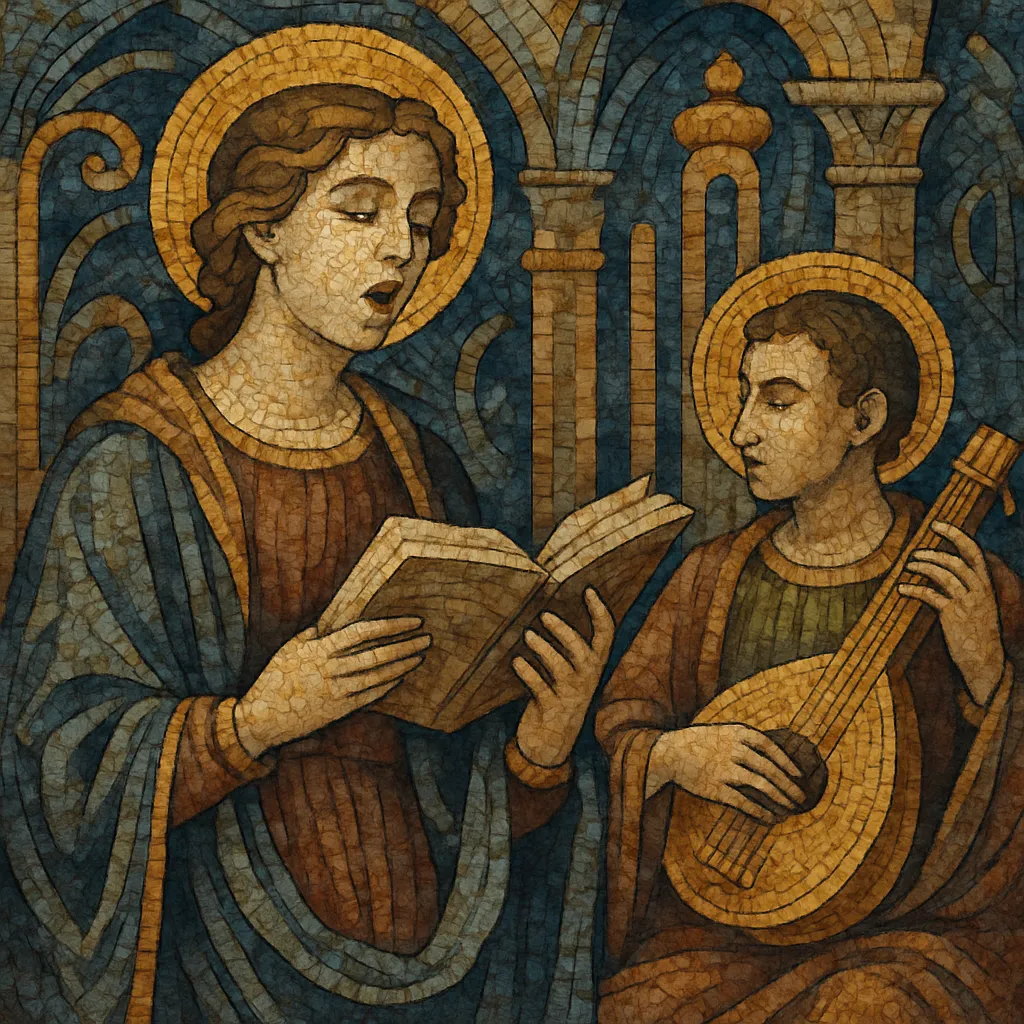A cantata is a multi-movement vocal composition with instrumental accompaniment, typically written for one or more soloists, choir, and a continuo or small orchestra. It may be sacred (for liturgical use) or secular (for courtly or domestic performance).
Emerging in early 17th-century Italy, the cantata adopts the expressive recitative–aria contrast of opera on a smaller scale. Baroque church cantatas—especially in the German Lutheran tradition—often weave congregational chorales, contrapuntal choruses, and solo arias into a coherent cycle tied to the liturgical calendar.
Stylistically, cantatas use tonal Baroque harmony, basso continuo, and movement types such as recitativo secco/accompagnato, da capo arias, choruses, and sinfonias. The genre later broadened into concert and scenic cantatas in the 19th and 20th centuries.
The term “cantata” (from the Italian cantare, “to sing”) arose in early 17th‑century Italy as a counterpart to instrumental sonatas. Early secular chamber cantatas—by composers such as Luigi Rossi, Barbara Strozzi, and Giacomo Carissimi—adapted the operatic language of recitative and aria to intimate settings for solo voice with basso continuo. These works typically alternated narrative recitatives with expressive arias and occasionally included small instrumental sinfonias.
By the late 17th and early 18th centuries, the genre flourished in German-speaking lands as the church cantata. Composers including Dieterich Buxtehude and Georg Philipp Telemann established cycles aligned to the liturgical year, incorporating biblical texts, poetic meditations, and chorale melodies. Johann Sebastian Bach brought the form to its apogee with sacred cantatas that combine learned counterpoint, chorale harmonizations, concerted arias, and vivid text painting.
In the later 18th century, the cantata’s strict liturgical function softened, and composers produced occasional and ceremonial cantatas for courts and civic events. The 19th century saw continued use of the term for large-scale works for chorus and orchestra on historical or poetic subjects, bridging sacred and secular spheres and influencing concert practices in choral societies.
In the 20th century, the cantata label was applied to a wide spectrum of concert works, often dramatic but not fully staged. Notable examples include Carl Orff’s scenic cantata Carmina Burana, which blends archaic texts with modern rhythmic vitality. The genre thus persists as a flexible framework for multi-movement vocal–instrumental storytelling without the staging demands of opera.


